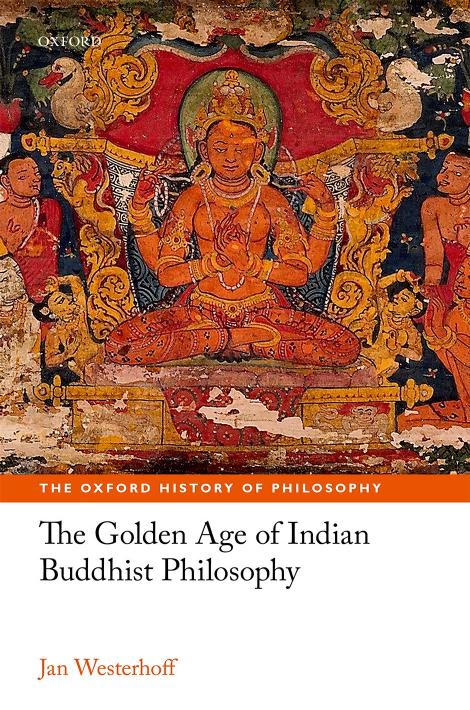The Golden Age of Indian Buddhist Philosophy by Jan Westerhoff

Author:Jan Westerhoff
Language: eng
Format: epub, pdf
Published: 2018-03-31T09:40:53+00:00
* * *
OUP CORRECTED PROOF – FINAL, 31/3/2018, SPi
YOGĀCĀRA
or finally, it may indeed refer to a different Vasubandhu, but in quite another
way. Paramārtha’s biography tells us that all the three sons of Vasubandhu’s
mother were called ‘Vasubandhu’, though two of them were also called by
:
different names in order to tell them apart: Asanga (‘no attachment’) and
Viriñcivatsa (child of Viriñci, another name of his mother Prasannaśīlā). In
this case the term ‘older Vasubandhu’ could refer to the oldest of these three
:
Vasubandhus, namely Asanga.
It seems as if the main force that makes the hypothesis of the two Vasu- The main force
bandhus attractive is one that often stands in the way of a nuanced under- behind the
hypothesis
standing of the history of Buddhist philosophy: the view that Buddhist
philosophers can be clearly divided into different schools of thought, that
each of these schools of thought has a core set of unique beliefs that distin-
guishes them from all other schools, and that all of a philosopher’s intellectual
activity takes place within the limits of this framework. While there is no doubt
that doxographic frameworks are propaedeutically useful for trying to explain Difficulties with
the rough outlines of development of Buddhist thought (as they are used in the doxographic
frameworks
present work), the overly simplistic nature of their key assumptions is obvious
once these are properly formulated. Buddhist philosophers did not compose
their treatises in order to found new schools, and did not subsequently regard
themselves as their chief exponents, but the identity of these schools is pro-
jected backwards with the benefit of historical hindsight, in order to stress
certain similarities amongst the views of temporally contiguous sets of
thinkers. These schools developed, often over considerable time, and their
views developed with them; there is no fixed set of theses that is common to
every work by every author ascribed to a given school and thereby constitutive
of that school’s intellectual identity. Finally, the views of philosophers change
over the course of time, sometimes in radical ways, a fact that is as true today as
it was in ancient India. To ascribe philosophical texts to authors on the basis of
the fact that the positions described in them diverge, if at all, only in the most
minimal fashion is unlikely to lead to a satisfactory account of authors and the
development of their work. The fact that the framework incorporating these
views is not simply regarded as propaedeutic tool but as authoritative in its
own right lends support to the idea of ‘splitting up’ Vasubandhu into two,
despite the fact that the traditional accounts always consider Vasubandhu to be
a single author with a unified body of works. The split allows us to distinguish
the Ābhidharmika Vasubandhu from the Yogācārin, ascribe to each a set of
unique Abhidharma and Yogācāra beliefs, and consider their intellectual
activity as wholly contained within these respective frameworks. However,
once we question the intrinsic cogency of the framework motivating this
split we realize that the justification for the division slips away, and that the
historical evidence brought forward to support it can equally be explained in
other ways.
Download
The Golden Age of Indian Buddhist Philosophy by Jan Westerhoff.pdf
This site does not store any files on its server. We only index and link to content provided by other sites. Please contact the content providers to delete copyright contents if any and email us, we'll remove relevant links or contents immediately.
| Africa | Americas |
| Arctic & Antarctica | Asia |
| Australia & Oceania | Europe |
| Middle East | Russia |
| United States | World |
| Ancient Civilizations | Military |
| Historical Study & Educational Resources |
Confession of a Buddhist Atheist by Stephen Batchelor(594)
Moments of Mindfulness by Thich Nhat Hanh(578)
Mindfulness by Sarah Shaw(537)
The All-Pervading Melodious Drumbeat by Ra Yeshe Senge(512)
Why I Am Not a Buddhist by Evan Thompson(471)
Being Human in a Buddhist World by Janet Gyatso(469)
The All-Pervading Melodious Drumbeat by Senge Ra Yeshe(456)
Buddhism by Paul Williams(448)
Tantric Ethics by Je Tsongkhapa(391)
A Buddhist Bible by Goddard Dwight(389)
Shingon Refractions by Mark Unno(384)
Radical Dharma by Rev. angel Kyodo williams & Rod Owens & Jasmine Syedullah(380)
The Heart of Unconditional Love by Tulku Thondup(378)
Manual of Zen Buddhism by Daisetz Teitaro Suzuki(356)
The Birth of Insight: Meditation, Modern Buddhism, and the Burmese Monk Ledi Sayadaw by Erik Braun(348)
The Idries Shah Anthology by Idries Shah(345)
Cultivating Spirituality: A Modern Shin Buddhist Anthology by Mark L. Blum;Robert F. Rhodes(343)
The Heart of Understanding: Commentaries on the Prajnaparamita Heart Sutra by Thich Nhat Hanh(337)
Understanding the Case Against Shukden: The History of a Contested Tibetan Practice by Gavin Kilty(336)
